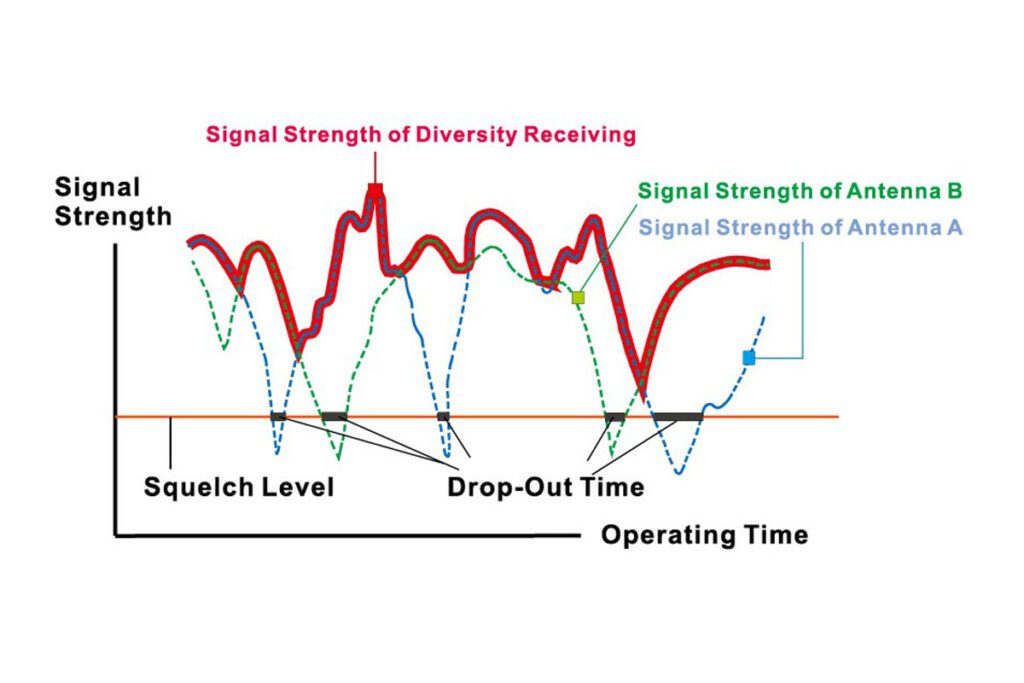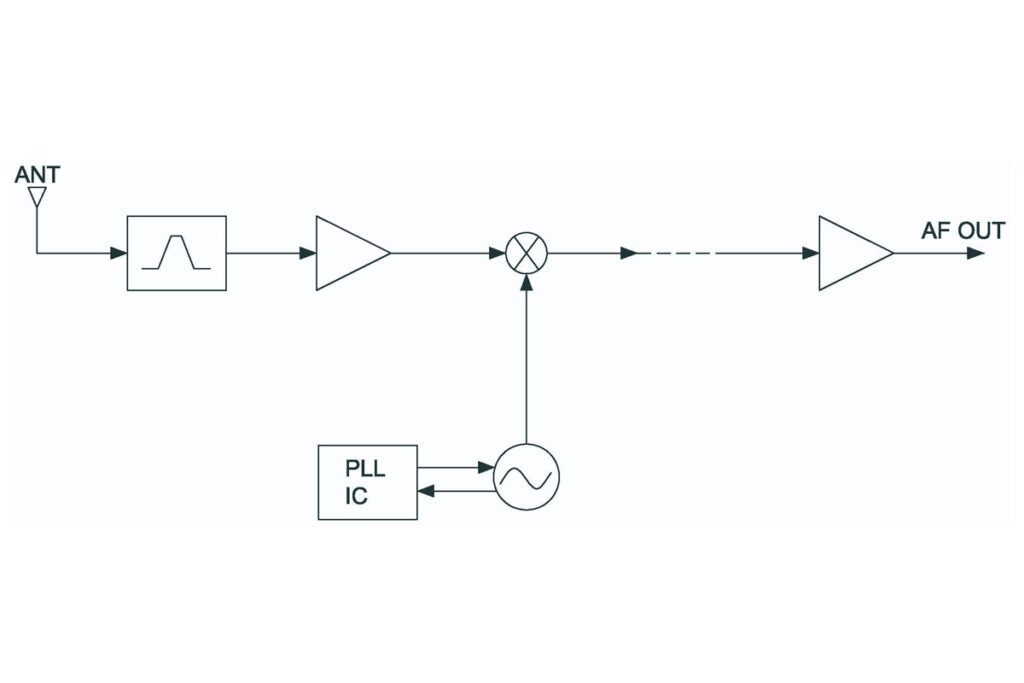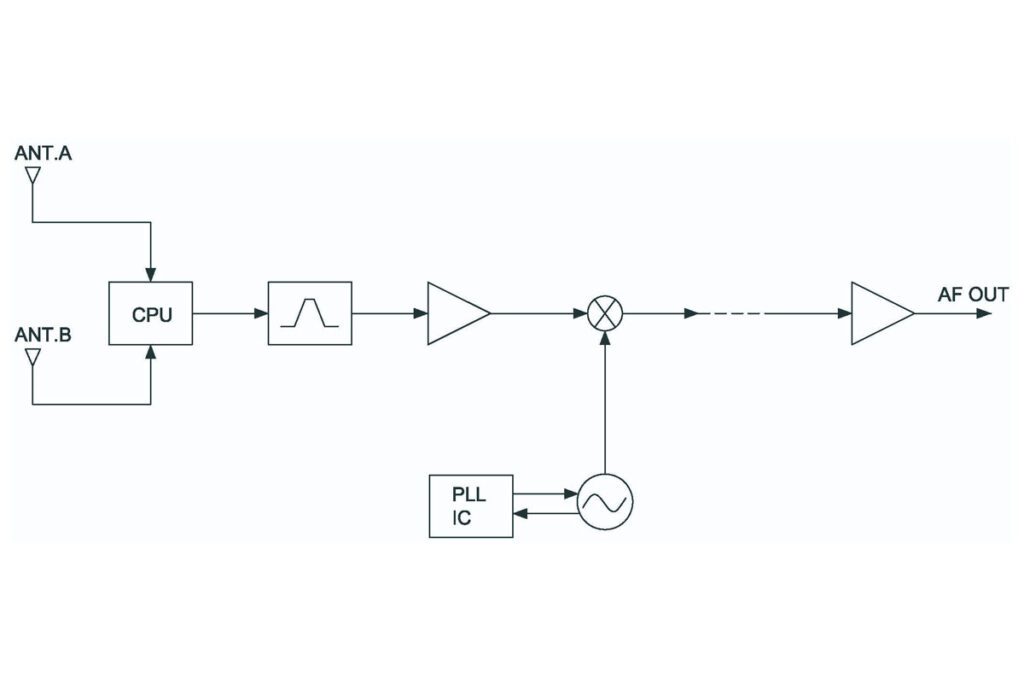Before choosing professional wireless receivers for live performances, please study the following issues.
When the antenna of a receiver receives the direct signal from the transmitter, it also receives the indirect signal reflected by the surrounding environment at the same time. As these two signals are out-of-phase, the signal strength will be canceled out; when the signal strength is lower than the receiver’s muting threshold, then the output of the receiver will produce the signal drop-out and noise caused by the “dead point”. The weaker the signal, the greater the noise.

1 | Using Switching Diversity Receiving mode to resolve the reception problems:
In order to overcome the defect of the single antenna receiving signal drop-out and noise, the “Automatic Switching Diversity Receiving” design has been developed to solve these problems .The design employs two antennas set at different locations to receive the signal from one wireless microphone transmitter, which then automatically switches to the one which is receiving the stronger signal.
With this reception mode, when receiving weak signals, the improvement probability of signal drop-out is about five times higher than with a single antenna; while the signal intensity is increased about three times (10dB). The probability can be improved to about 45 times and there’s almost no signal drop-out in short operating distances. The higher the sensitivity of the receiver, the longer the reception distance and the less signal dropout and the noise will be lower when the signal strength drops close to the receiver’s muting threshold.
2 | Switching Diversity Receiving Categories:
Using a single antenna to directly connect to the tuner is known as “Non-Diversity Receiving”. The Automatic Switching Diversity Receiving has two modes: “Dual Antenna Diversity Receiving” (Ant-Diversity) and “True Diversity Receiving” (True-Diversity).


Dual antenna diversity reception or “Predictive diversity reception” employs two antennas in different locations. A specially designed CPU control circuit automatically switches to the antenna which is receiving a stronger signal and connects its signal to the tuner. The output signal of the demodulator provides a control voltage to the CPU control unit to quickly determine whether to switch to the other antenna or not, in order to achieve the best antenna connection. This allows the receiver to always keep on the antenna which has the stronger signal, thus eliminating the signal drop-out and instability caused by the “dead point”.
True-Diversity also employs two antennas in different locations connecting respectively to dual tuners which have the same characteristics. The output signals are demodulated from the tuner and connected to the comparator and switching circuit for fast switching to the stronger audio signal output. This receiving mode perfectly prevents the signal drop-out and instability caused by the receiving “dead point”.

3 | The advantages and disadvantages of Antenna Diversity & True-Diversity:
To lower cost, many wireless microphone manufacturers employ the dual-antenna diversity receiving design. Though two antennas are applied to prevent signal drop-out, the result is not ideal because only one tuner is used. Therefore, it will not perfectly resolve the signal drop-out and signal instability issue, especially under complex reception environments and when longer distance operation is required.
The True-Diversity receiving design utilizes two antennas connecting to two tuners respectively. The output signals from the demodulator are connected to the comparator, and its output signal is always switched immediately to the better quality signal. Although the cost of this true diversity receiving mode is greater, it improves the quality of signal reception, free from signal dropout and noise interference.
4 | Select “True Diversity” receivers to ensure wireless microphone perfect sound quality!
The true diversity wireless receiver eliminates signal dropout and signal shift during performances. The choice of a “True Diversity” receiver meets the audio quality requirements of professionals. Although it is more expensive, it is the only choice for professional stage and live performances to ensure perfect sound quality!